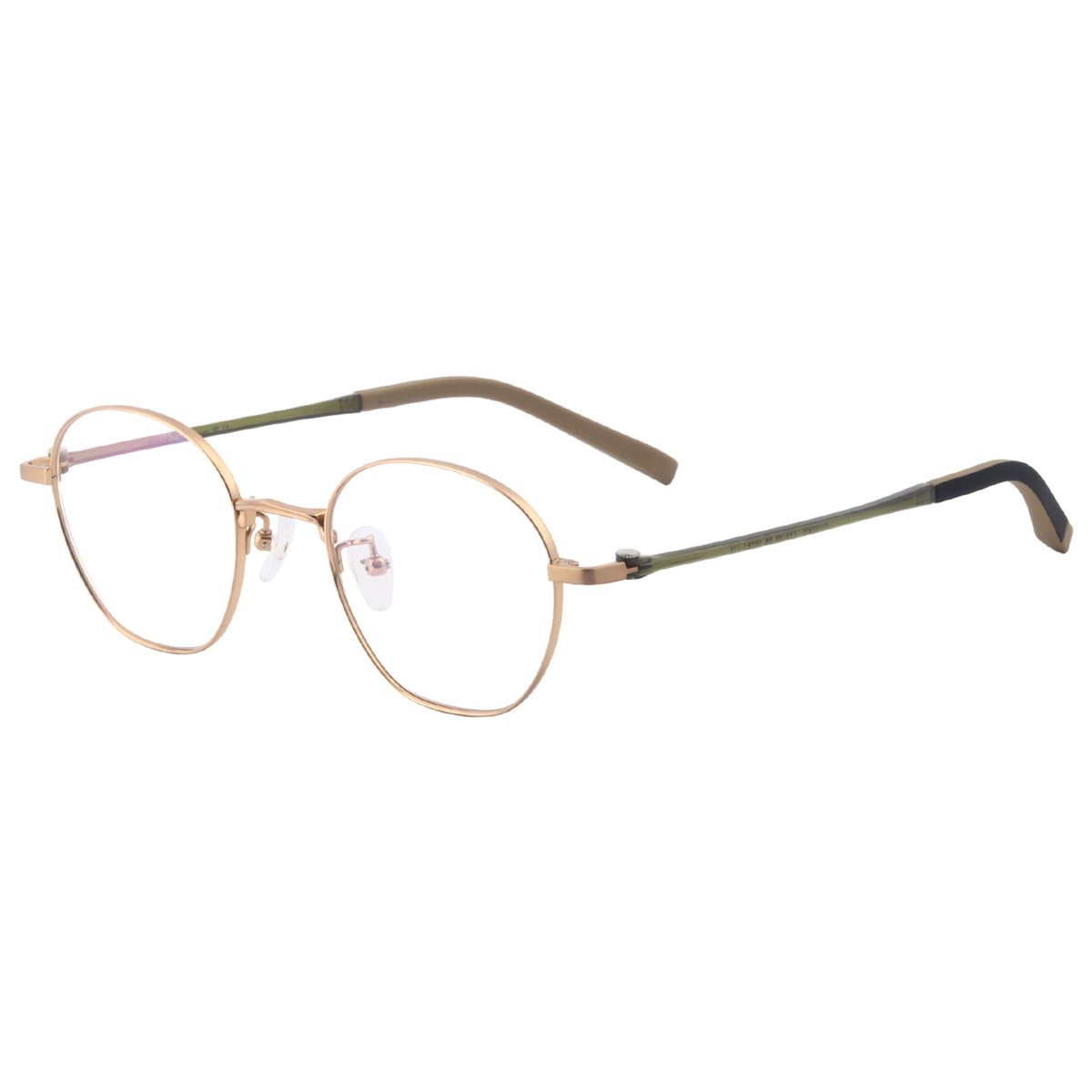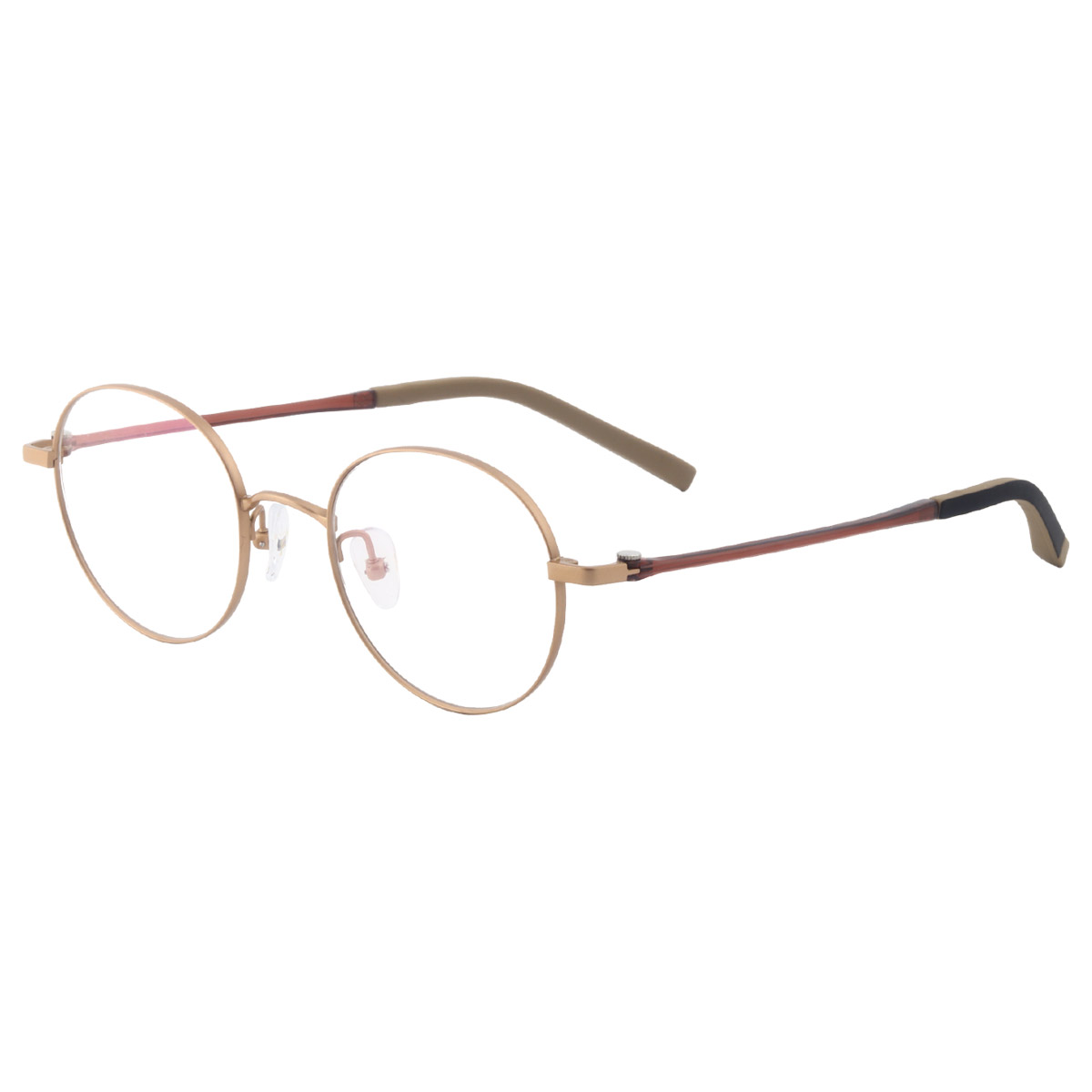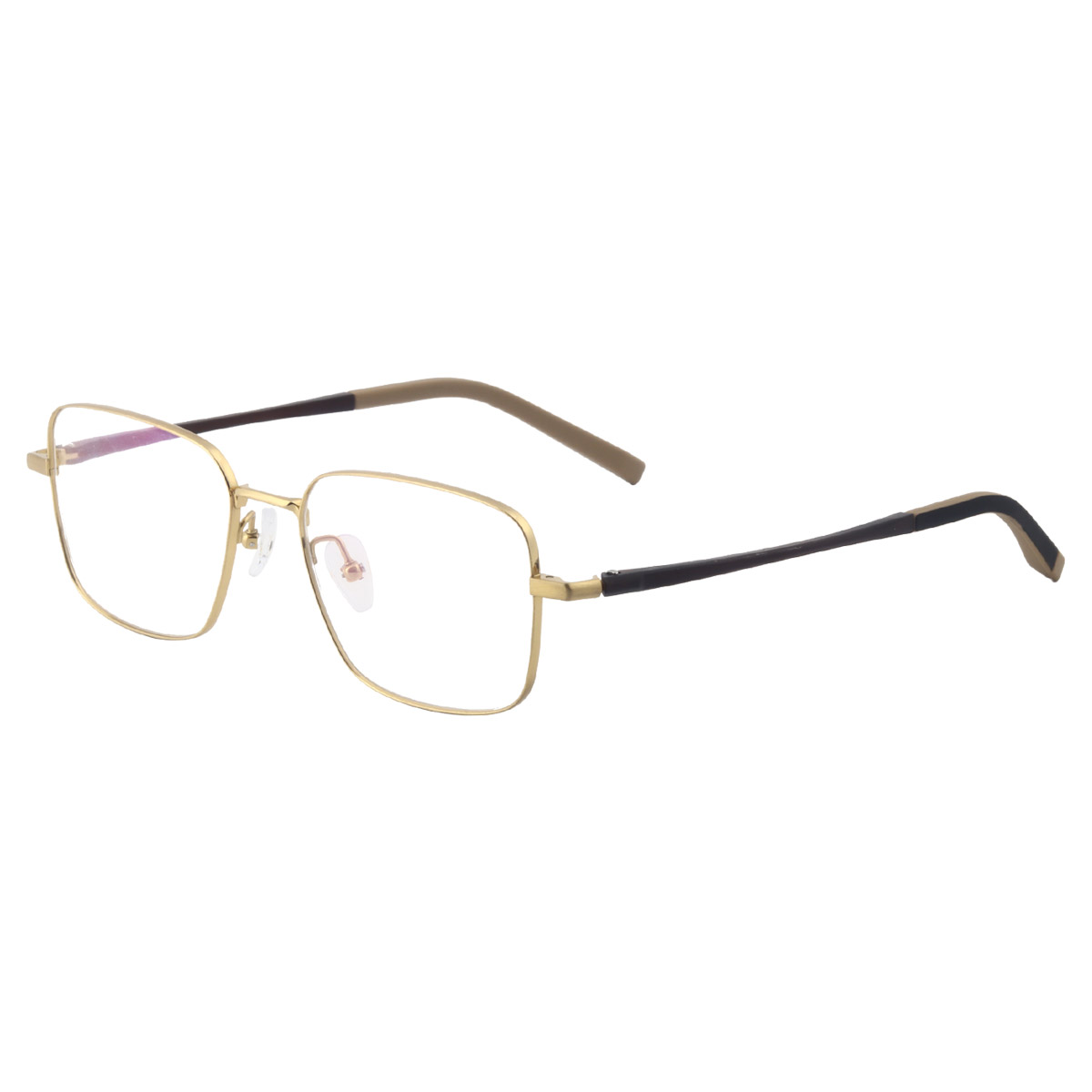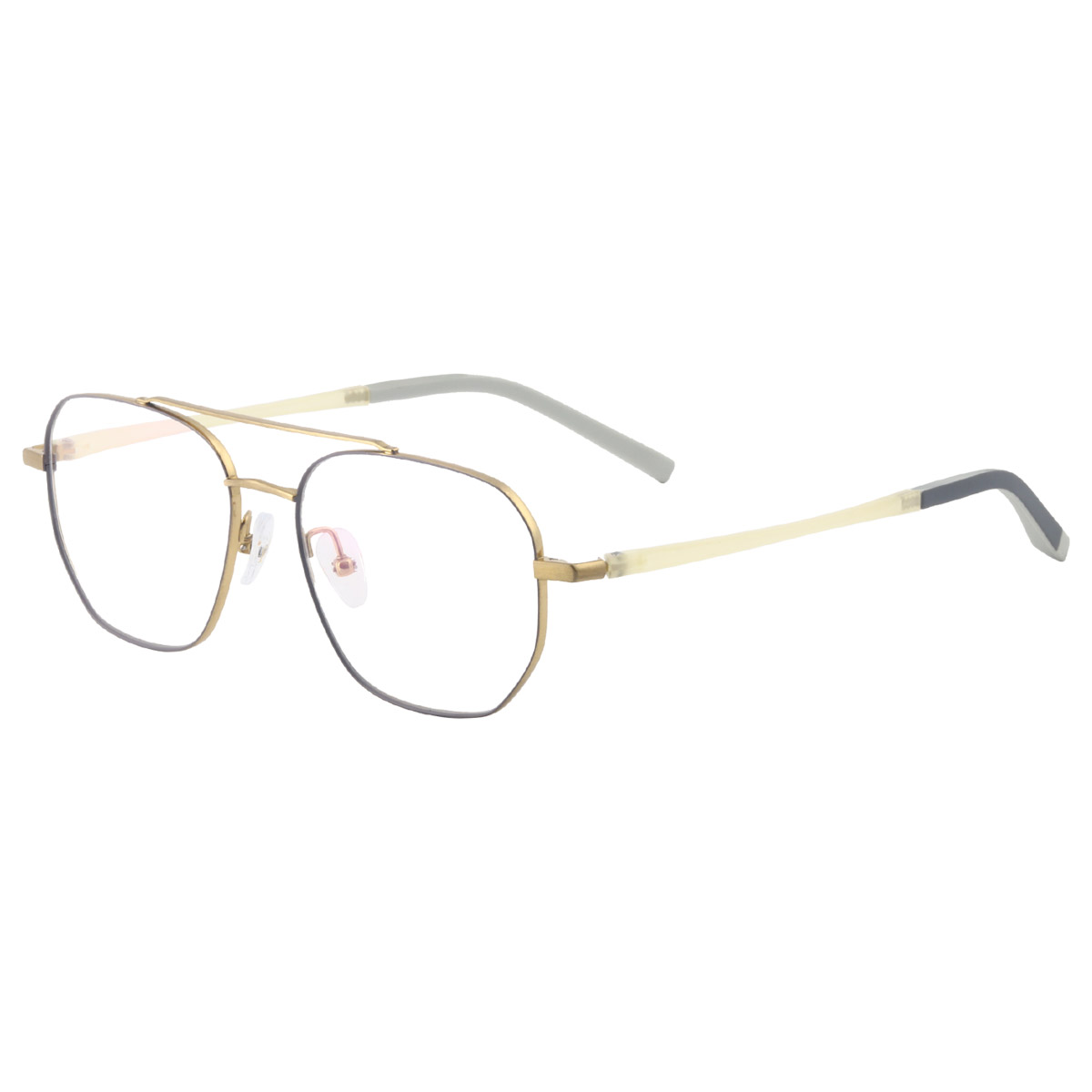Q: What are Titanium+ Ultem Optical Glasses?
A: Titanium+ Ultem Optical Glasses represent an innovative eyewear frame technology that combines titanium and Ultem polymer.
Titanium, known for its high strength-to-weight ratio and corrosion resistance, provides exceptional stability in optical applications.
Ultem, a high-performance thermoplastic resin, offers excellent impact and heat resistance, ensuring the integrity of eyewear in extreme environments.
This combination creates a lightweight, durable frame system suitable for both everyday wear and professional optical needs while reducing wearer fatigue.
In Zhejiang Qiliang Optical Technology Co., Ltd.'s vertically integrated manufacturing chain, these glasses are manufactured with full process control to ensure material purity and process consistency, enhancing the reliability of the end product.
Q: Why are titanium and Ultem materials considered an ideal combination for optical eyewear?
A: The synergy between titanium and Ultem stems from their inherent properties, which together optimize eyewear performance. Titanium's lightweight properties reduce the overall weight of the frame, reducing pressure on the nose bridge and ears, while Ultem's elastic modulus provides a cushioning effect for enhanced wearing comfort.
Ultem's chemical inertness prevents degradation caused by sweat or environmental factors, while titanium's inertness ensures long-term wear without rust or deformation, extending product life.
This material pairing supports precise lens fit in optical design, reduces optical deviation, and improves visual clarity.
Zhejiang Qiliang Optical Technology Co., Ltd. leverages its integrated supply chain capabilities to rigorously control the titanium alloy and Ultem fusion process, from raw material sourcing to injection molding, ensuring that each pair of glasses meets high optical engineering specifications.
Q: What are the key advantages of Titanium + Ultem Optical Glasses in terms of durability and comfort?
A: The core advantage of these glasses lies in their material science-driven design, which directly benefits the user.
In terms of durability, Ultem's high impact resistance absorbs external shocks and prevents frame breakage, while titanium's rigidity withstands daily wear and tear, making them suitable for active lifestyles. Comfort stems from its lightweight construction and ergonomic design. Ultem's flexibility conforms to facial contours, reducing hotspot pressure, while titanium's low thermal conductivity prevents thermal discomfort.
These properties combine to enable all-day wear, reduce frequent adjustments, and enhance the user experience.
Zhejiang Qiliang Optical Technology Co., Ltd.'s vertically integrated model verifies material properties through in-house testing laboratories and production line optimization, ensuring consistent durability and comfort standards across every batch.
Q: How do these glasses adapt to high-quality optical applications?
A: Titanium+ Ultem Optical Glasses are designed to meet professional optical needs, going beyond basic vision correction.
In professional environments, such as medical or industrial fields, the material's chemical and high-temperature resistance supports use in demanding conditions and protects lenses from damage.
For everyday consumers, the lightweight frames reduce eye fatigue, allowing for extended reading or digital device use, and improving quality of life.
In terms of optical performance, the frame's stability ensures precise lens positioning, reduces visual distortion, and is suitable for high-precision prescription lenses. Zhejiang Qiliang Optical Technology Co., Ltd. leverages its full supply chain integration, achieving seamless collaboration from lens R&D to frame assembly, making this type of eyewear a representative example of high-quality optical solutions.
Q: How does Zhejiang Qiliang Optical Technology Co., Ltd. leverage its vertical integration capabilities to drive the production of Titanium+ Ultem Optical Glasses?
A: The company's vertically integrated structure covers the entire eyewear manufacturing process, providing core support for this type of advanced eyewear.
Upstream in the supply chain, internal raw material management ensures the purity and consistency of titanium and Ultem, reducing the variable risks associated with external reliance.
Midstream in manufacturing, an integrated production line integrates injection molding, metal processing, and surface treatment technologies to optimize the material fusion process, improve production efficiency, and enhance product yield.
Downstream in the quality control process, end-to-end monitoring allows for rapid iteration to address design defects and ensure that the glasses meet international optical standards.
This integration enables the company to efficiently respond to market demand, shorten development cycles, and maintain cost competitiveness, providing a solid foundation for innovation in Titanium+ Ultem Optical Glasses.
Q: What unique manufacturing advantages does vertical integration bring to Titanium+ Ultem Optical Glasses? A: The vertically integrated model unlocks multiple benefits in manufacturing these high-tech glasses.
It accelerates innovation cycles, with in-house R&D teams directly connected to production, enabling rapid prototyping and testing of material formulations and frame designs.
It improves quality control, with full-process oversight reducing outsourcing risks and ensuring that each pair of glasses meets standards for mechanical properties and optical precision.
It enhances sustainability by integrating resources, reducing waste, and supporting the use of environmentally friendly materials such as recycled titanium alloys and bio-based Ultem variants.
Through this model, Zhejiang Qiliang Optical Technology Co., Ltd. has transformed vertical integration into a competitive advantage, distinguishing Titanium+ Ultem Optical Glasses in the market for their reliability and advancement.
Q: Why are Titanium+ Ultem Optical Glasses strategically important in the optical industry?
A: These glasses represent the evolution of optical technology, combining material innovation with lean manufacturing.
They are driving the industry's shift toward lightweight, durable, and comfortable products, meeting the growing demand of modern consumers for high-performance eyewear. In this competitive landscape, this technology highlights the role of materials science in enhancing product value-added, encouraging industry investment in R&D.
Zhejiang Qiliang Optical Technology Co., Ltd.'s vertical integration capabilities power this vision. Through full supply chain control, the company not only produces eyewear but also defines the future standard for high-quality optics.

 Search
Search EN
EN English
English Deutsch
Deutsch Français
Français Español
Español italiano
italiano cn
cn jp
jp kr
kr


















